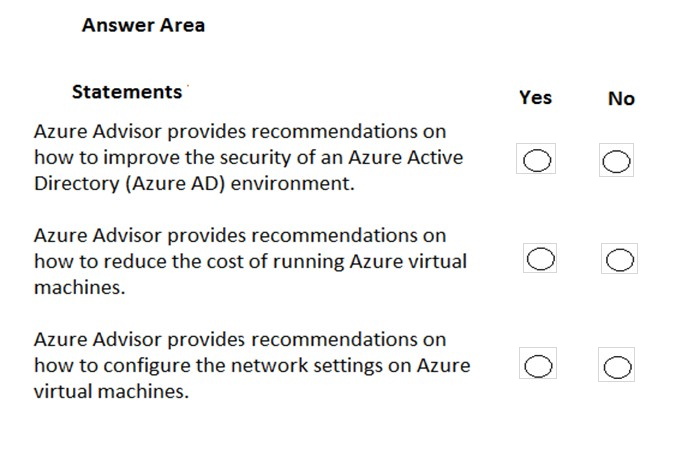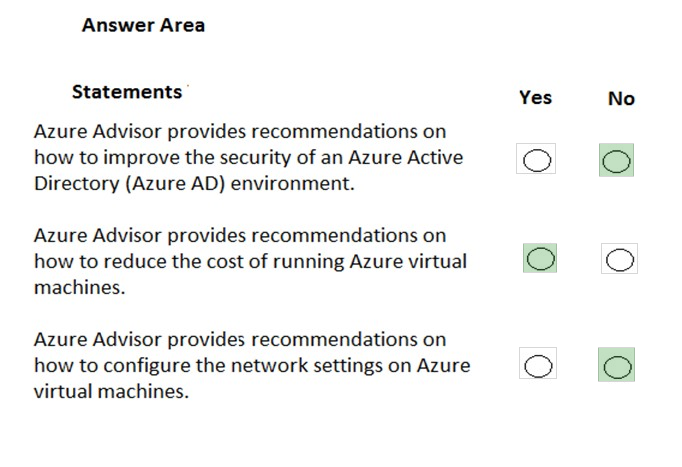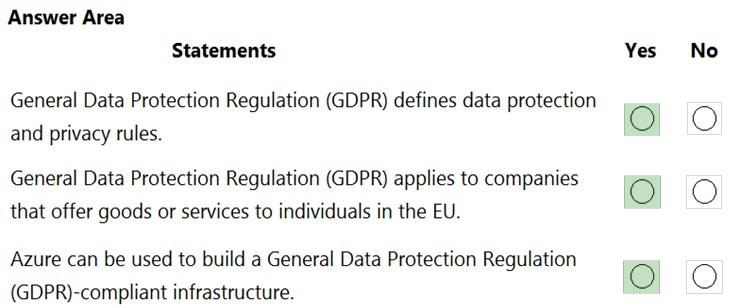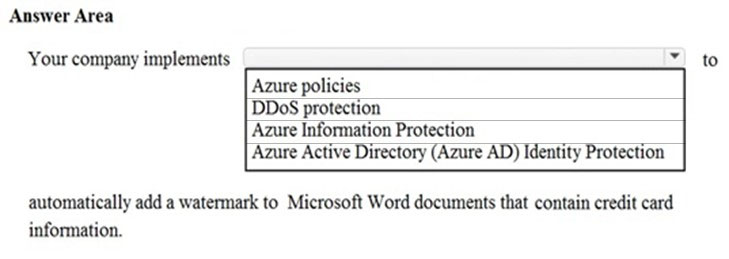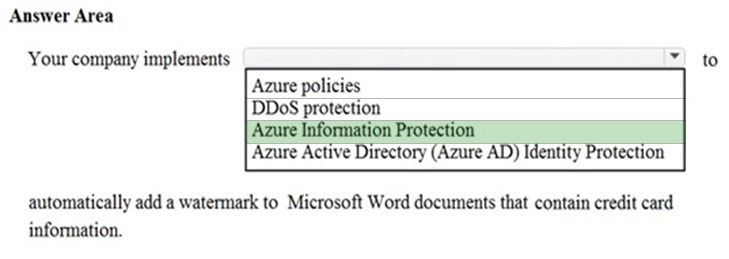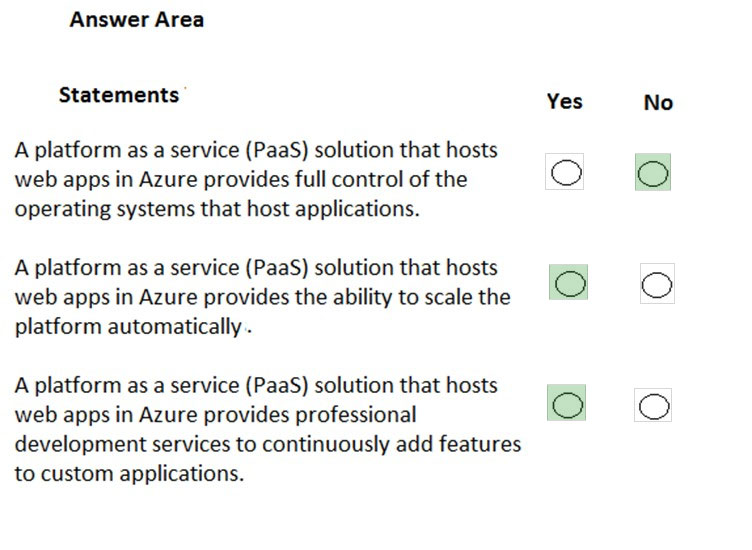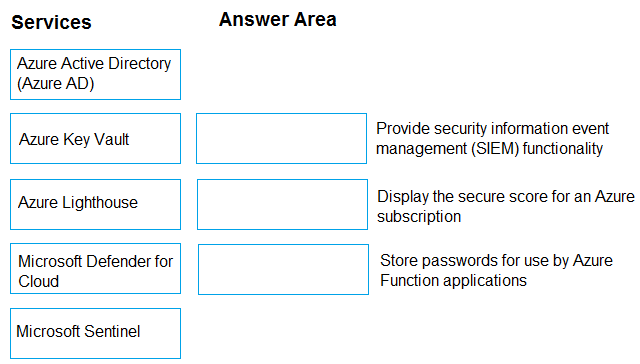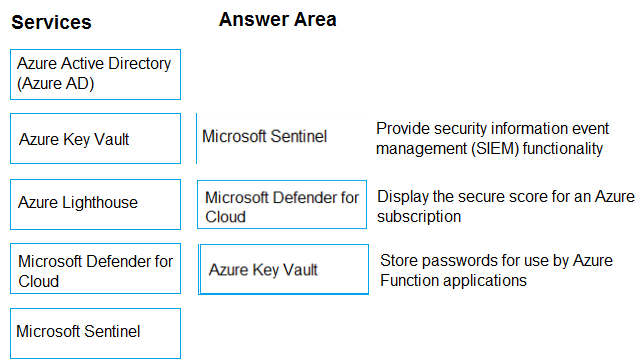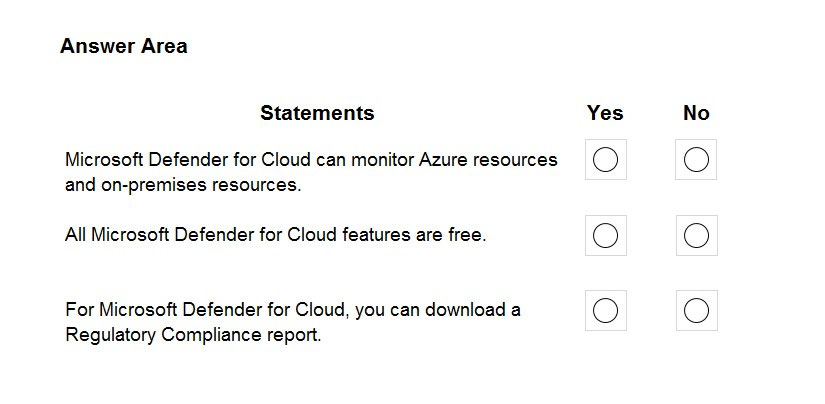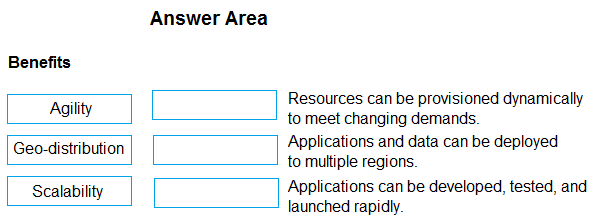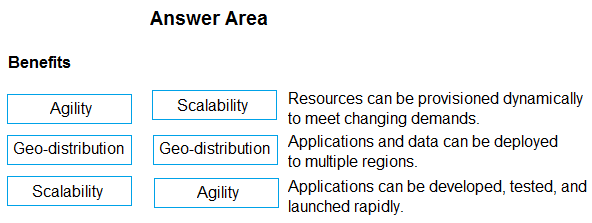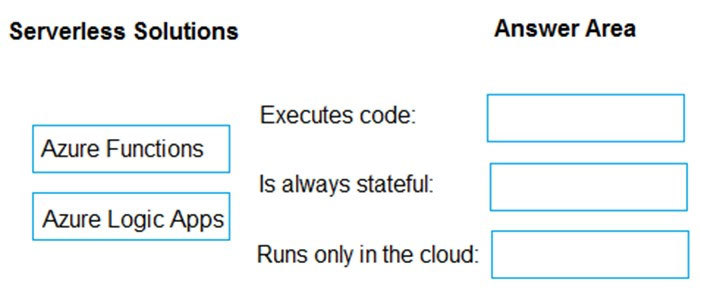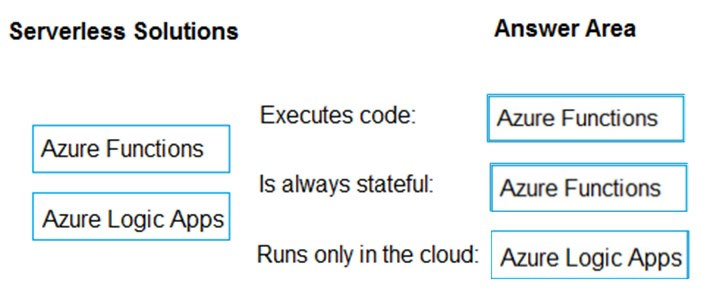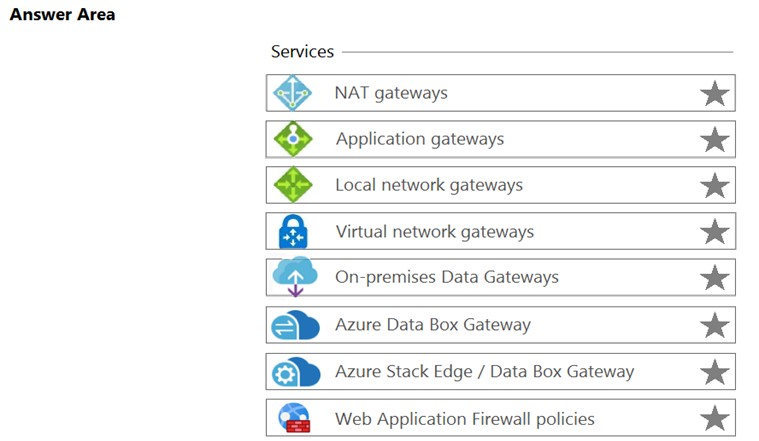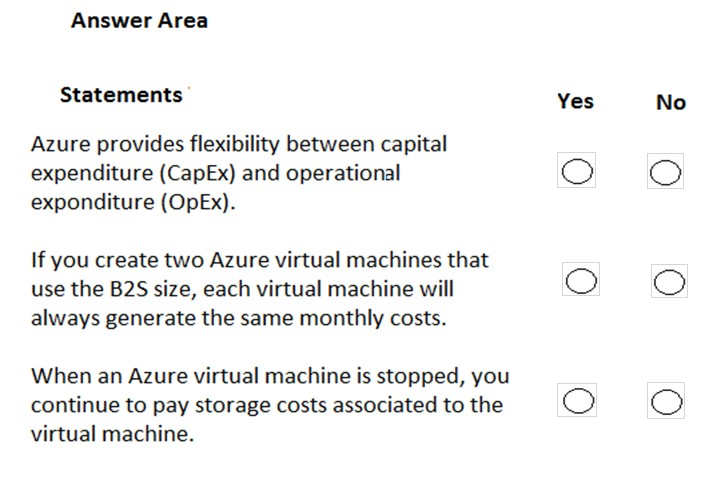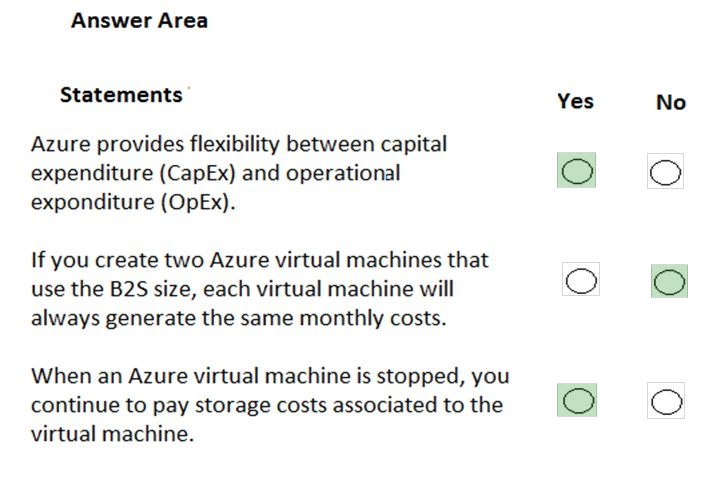AZ-900 Practice Questions Free – 50 Exam-Style Questions to Sharpen Your Skills
Are you preparing for the AZ-900 certification exam? Kickstart your success with our AZ-900 Practice Questions Free – a carefully selected set of 50 real exam-style questions to help you test your knowledge and identify areas for improvement.
Practicing with AZ-900 practice questions free gives you a powerful edge by allowing you to:
- Understand the exam structure and question formats
- Discover your strong and weak areas
- Build the confidence you need for test day success
Below, you will find 50 free AZ-900 practice questions designed to match the real exam in both difficulty and topic coverage. They’re ideal for self-assessment or final review. You can click on each Question to explore the details.
You need to migrate an on-premises server by using a lift-and-shift migration. To which type of cloud service should you migrate?
A. infrastructure as a service (IaaS)
B. software as a service (SaaS)
C. platform as a service (PaaS)
HOTSPOT - For each of the following statements, select Yes if the statement is true. Otherwise, select No. NOTE: Each correct selection is worth one point. Hot Area:
HOTSPOT - For each of the following statements, select Yes if the statement is true. Otherwise, select No. NOTE: Each correct selection is worth one point. Hot Area:
HOTSPOT - Select the answer that correctly completes the sentence.
Your company plans to deploy an Artificial Intelligence (AI) solution in Azure. What should the company use to build, test, and deploy predictive analytics solutions?
A. Azure Logic Apps
B. Azure Machine Learning Designer
C. Azure Batch
D. Azure Cosmos DB
HOTSPOT - To complete the sentence, select the appropriate option in the answer area. Hot Area:
HOTSPOT - For each of the following statements, select Yes if the statement is true. Otherwise, select No. NOTE: Each correct selection is worth one point. Hot Area:
This question requires that you evaluate the underlined text to determine if it is correct. If Microsoft plans to end support for an Azure service that does NOT have a successor service, Microsoft will provide notification at least 12 months before. Instructions: Review the underlined text. If it makes the statement correct, select `No change is needed`. If the statement is incorrect, select the answer choice that makes the statement correct.
A. No change is needed.
B. 6 months
C. 90 days
D. 30 days
HOTSPOT - For each of the following statements, select Yes if the statement is true. Otherwise, select No. NOTE: Each correct selection is worth one point. Hot Area:
You have an on-premises application that sends email notifications automatically based on a rule. You plan to migrate the application to Azure. You need to recommend a serverless computing solution for the application. What should you include in the recommendation?
A. a web app
B. a server image in Azure Marketplace
C. a logic app
D. an API app
Note: This question is part of a series of questions that present the same scenario. Each question in the series contains a unique solution that might meet the stated goals. Some question sets might have more than one correct solution, while others might not have a correct solution. After you answer a question in this section, you will NOT be able to return to it. As a result, these questions will not appear in the review screen. You have an Azure environment. You need to create a new Azure virtual machine from a tablet that runs the Android operating system. Solution: You use PowerShell in Azure Cloud Shell. Does this meet the goal?
A. Yes
B. No
DRAG DROP - Match the Azure services benefits to the correct descriptions. Instructions: To answer, drag the appropriate benefit from the column on the left to its description on the right. Each benefit may be used once, more than once, or not at all. NOTE: Each correct match is worth one point. Select and Place:
HOTSPOT - Select the answer that correctly completes the sentence. Hot Area:
You have an Azure application that uses the services shown in the following table.How should you calculate the composite SLA for the application?
A. 0.999 * 0.9999 = 0.9989001 = 99.89001%
B. 0.999 / 0.9999 = 0.9991 = 99.91%
C. Max(0.999, 0.9999) = 0.9999 = 99.99%
D. Min(0.999, 0.9999) = 0.999 = 99.9%
HOTSPOT - Select the answer that correctly completes the sentence.
HOTSPOT - For each of the following statements, select Yes if the statement is true. Otherwise, select No. NOTE: Each correct selection is worth one point. Hot Area:
You need to be notified when Microsoft plans to perform maintenance that can affect the resources deployed to an Azure subscription. What should you use?
A. Azure Monitor
B. Azure Service Health
C. Azure Advisor
D. Microsoft Trust Center
DRAG DROP - Match the cloud computing benefits to the correct descriptions. To answer, drag the appropriate benefit from the column on the left to its description on the right. Each benefit may be used once, more than once, or not at all. NOTE: Each correct match is worth one point. Select and Place:
Your company plans to migrate all its data and resources to Azure. The company's migration plan states that only Platform as a Service (PaaS) solutions must be used in Azure. You need to deploy an Azure environment that meets the company's migration plan. What should you create?
A. Azure virtual machines, Azure SQL databases, and Azure Storage accounts.
B. an Azure App Service and Azure virtual machines that have Microsoft SQL Server installed.
C. an Azure App Service and Azure SQL databases.
D. Azure storage accounts and web server in Azure virtual machines.
DRAG DROP - Match the serverless solution to the correct characteristic. To answer, drag the appropriate serverless solution from the column on the left to its characteristic on the right. Each serverless solution may be used once, more than once, or not at all. NOTE: Each correct match is worth one point. Select and Place:
HOTSPOT - Select the answer that correctly completes the sentence. Hot Area:
HOTSPOT - You plan to extend your company's network to Azure. The network contains a VPN appliance that uses an IP address of 131.107.200.1. You need to create an Azure resource that defines the VPN appliance in Azure. Which Azure resource should you create? To answer, select the appropriate resource in the answer area. Hot Area:
Note: This question is part of a series of questions that present the same scenario. Each question in the series contains a unique solution that might meet the stated goals. Some question sets might have more than one correct solution, while others might not have a correct solution. After you answer a question in this section, you will NOT be able to return to it. As a result, these questions will not appear in the review screen. You have an Azure subscription named Subscription1. You sign in to the Azure portal and create a resource group named RG1. From Azure documentation, you have the following command that creates a virtual machine named VM1. az vm create --resource-group RG1 --name VM1 --image UbuntuLTS --generate-ssh-keys You need to create VM1 in Subscription1 by using the command. Solution: From a computer that runs Windows 10, install Azure CLI. From a command prompt, sign in to Azure and then run the command. Does this meet the goal?
A. Yes
B. No
Which two features or services can be integrated with Azure Monitor? Each correct answer presents part of the solution. NOTE: Each correct answer is worth one point.
A. Azure status
B. Application Insights
C. Azure Advisor
D. Log Analytics
E. Azure Service Health
You have been informed by your superiors of the company's intentions to automate server deployment to Azure. There is, however, some concern that administrative credentials could be uncovered during this process. You are required to make sure that during the deployment, the administrative credentials are encrypted using a suitable Azure solution. Solution: You recommend the use of Azure Multi-Factor Authentication (MFA). Does the solution meet the goal?
A. Yes
B. No
Note: This question is part of a series of questions that present the same scenario. Each question in the series contains a unique solution that might meet the stated goals. Some question sets might have more than one correct solution, while others might not have a correct solution. After you answer a question in this section, you will NOT be able to return to it. As a result, these questions will not appear in the review screen. You plan to deploy several Azure virtual machines. You need to ensure that the services running on the virtual machines are available if a single data center fails. Solution: You deploy the virtual machines to two or more resource groups. Does this meet the goal?
A. Yes
B. No
Note: This question is part of a series of questions that present the same scenario. Each question in the series contains a unique solution that might meet the stated goals. Some question sets might have more than one correct solution, while others might not have a correct solution. After you answer a question in this section, you will NOT be able to return to it. As a result, these questions will not appear in the review screen. Your company plans to migrate all its data and resources to Azure. The company's migration plan states that only Platform as a Service (PaaS) solutions must be used in Azure. You need to deploy an Azure environment that meets the company migration plan. Solution: You create an Azure App Service and Azure Storage accounts. Does this meet the goal?
A. Yes
B. No
HOTSPOT - For each of the following statements, select Yes if the statement is true. Otherwise, select No. NOTE: Each correct selection is worth one point.
HOTSPOT - For each of the following statements, select Yes if the statement is true. Otherwise, select No. NOTE: Each correct selection is worth one point.
Your company plans to request an architectural review of an Azure environment from Microsoft. The company currently has a Basic support plan. You need to recommend a new support plan for the company. The solution must minimize costs. Which support plan should you recommend?
A. Premier
B. Developer
C. Professional Direct
D. Standard
HOTSPOT - Select the answer that correctly completes the sentence.
HOTSPOT - For each of the following statements, select Yes if the statement is true. Otherwise, select No. NOTE: Each correct selection is worth one point. Hot Area:
HOTSPOT - To complete the sentence, select the appropriate option in the answer area. Hot Area:
HOTSPOT - To complete the sentence, select the appropriate option in the answer area. Hot Area:
DRAG DROP - Match the Azure services to the correct descriptions. Instructions: To answer, drag the appropriate Azure service from the column on the left to its description on the right. Each service may be used once, more than once, or not at all. NOTE: Each correct match is worth one point. Select and Place:
You have 1,000 virtual machines hosted on the Hyper-V hosts in a data center. You plan to migrate all the virtual machines to an Azure pay-as-you-go subscription. You need to identify which expenditure model to use for the planned Azure solution. Which expenditure model should you identify?
A. scalable
B. operational
C. elastic
D. capital
HOTSPOT - To complete the sentence, select the appropriate option in the answer area. Hot Area:
What provides a unified way to project and manage non-Azure resources in Azure Resource Manager (ARM)?
A. Azure Migrate
B. Azure AD Connect
C. Azure Arc
D. Azure Front Door
DRAG DROP - Match the Azure service to the correct definition. Instructions: To answer, drag the appropriate Azure service from the column on the left to its description on the right. Each service may be used once, more than once, or not at all. NOTE: Each correct selection is worth one point. Select and Place:
Which Azure service should you use to collect events from multiple resources into a centralized repository?
A. Azure Event Hubs
B. Azure Analysis Services
C. Azure Monitor
D. Azure Stream Analytics
HOTSPOT - For each of the following statements, select Yes if the statement is true. Otherwise, select No. NOTE: Each correct selection is worth one point. Hot Area:
HOTSPOT - To complete the sentence, select the appropriate option in the answer area. Hot Area:
HOTSPOT - For each of the following statements, select Yes if the statement is true. Otherwise, select No. NOTE: Each correct selection is worth one point.
HOTSPOT - Select the answer that correctly completes the sentence.
Which Azure service provides a set of version control tools to manage code?
A. Azure Repos
B. Azure DevTest Labs
C. Azure Storage
D. Azure Cosmos DB
HOTSPOT - For each of the following statements, select Yes if the statement is true. Otherwise, select No. NOTE: Each correct selection is worth one point. Hot Area:
This question requires that you evaluate the underlined text to determine if it is correct. Resource groups provide organizations with the ability to manage the compliance of Azure resources across multiple subscriptions. Instructions: Review the underlined text. If it makes the statement correct, select `No change is needed`. If the statement is incorrect, select the answer choice that makes the statement correct.
A. No change is needed
B. Management groups
C. Azure policies
D. Azure App Service plans
What are two characteristics of the public cloud? Each correct answer presents a complete solution. NOTE: Each correct selection is worth one point.
A. dedicated hardware
B. unsecured connections
C. limited storage
D. metered pricing
E. self-service management
HOTSPOT - For each of the following statements, select Yes if the statement is true. Otherwise, select No. NOTE: Each correct selection is worth one point. Hot Area:
HOTSPOT - To complete the sentence, select the appropriate option in the answer area. Hot Area:
Free Access Full AZ-900 Practice Questions Free
Want more hands-on practice? Click here to access the full bank of AZ-900 practice questions free and reinforce your understanding of all exam objectives.
We update our question sets regularly, so check back often for new and relevant content.
Good luck with your AZ-900 certification journey!


